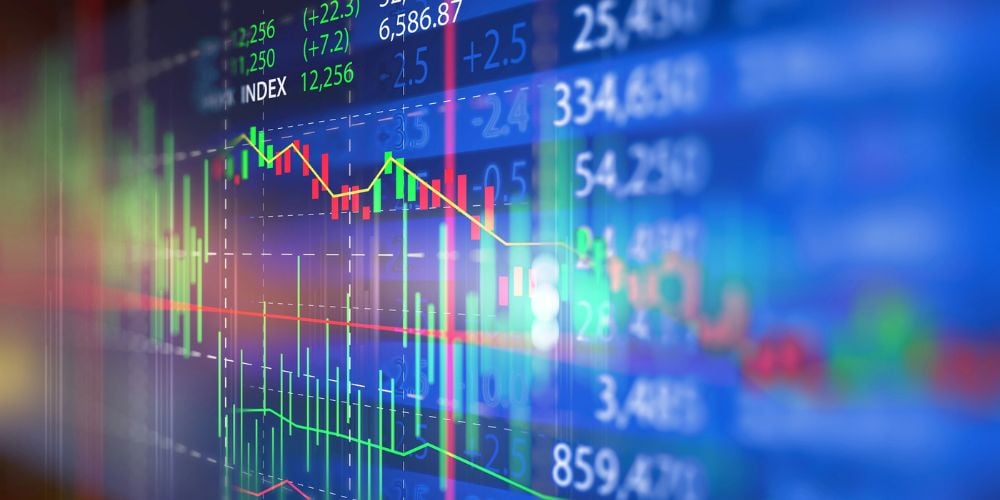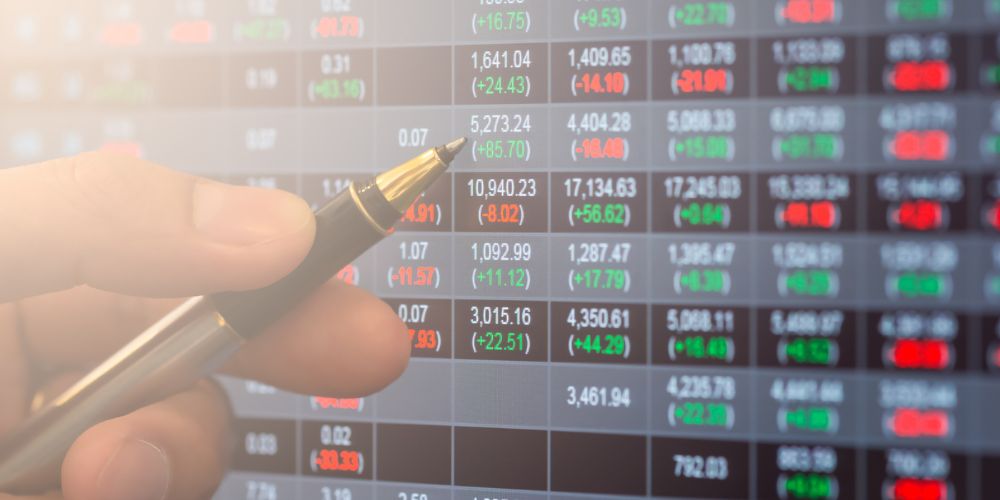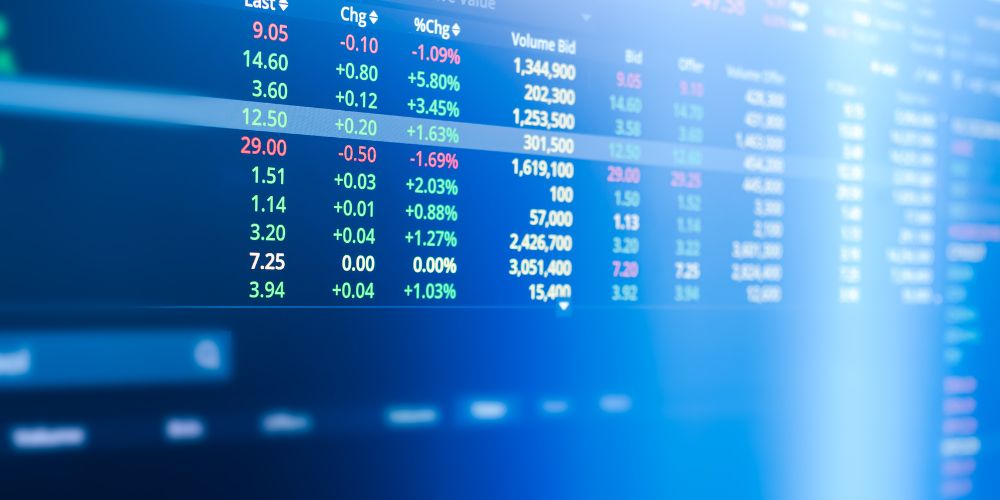If you’re diving into the world of stock trading, you might wonder “what does filled mean in stocks?” for your orders.
Simply put, when an order is ‘filled’, it means your trade has been executed – your buy or sell instruction has successfully matched with a counterpart in the market.
But what factors influence this process, and how does it affect your trading strategy?
This article provides insightful details into how filled orders work, the varying conditions that impact them, and the way they shape your investment outcomes.
Key Takeaways
-
In stock trading, an order is ‘filled’ when a buy or sell request is completed at the agreed price, which could either be ‘partially filled’ or ‘fully filled’ based on whether the order meets certain conditions such as limit price.
-
Filled orders are influenced by the type of order placed—market orders prioritize quick execution over price, limit orders provide price control but lack guaranteed execution, and stop orders become active and convert to market orders upon reaching a set price.
-
The execution of stock orders is affected by various factors such as market volatility, trading volume, and market conditions, which can impact the speed and manner of an order being filled, with no guarantee of instantaneous execution or profits.

Defining What Does Filled Mean in Stocks?
In stock trading, ‘filled’ denotes the successful completion of your buy or sell order at the fill or execution price.
So, when does an order get filled? This happens when you place an order to buy a stock at a specific price and a seller agrees to that price, completing the transaction and filling the order at that price.
However, the saga doesn’t end with the filling of an order. The filled status is an integral part of the transaction process for stocks, bonds, and other financial securities, dictating the narrative of your investment journey.
Now, let’s delve deeper into the importance of filled status and the differences between partially filled and fully filled orders.
The Importance of Filled Status
The filled status of an order acts as a key indicator in your trading journey. It highlights the shift in your investment position, a vital phase in managing your portfolio and tracking returns.
Just as a compass directs a ship, the filled status directs traders by confirming the execution of their trades.
Moreover, knowledge of an order’s filled status also plays a crucial role in managing risk within your investment portfolio.
It provides traders with a clear understanding of past order executions, enabling them to make informed decisions about future trades.
Now, let’s proceed to distinguish between partially filled and fully filled orders.
Partially Filled vs. Fully Filled Orders
In stock trading, fully filled and partially filled orders can be compared to two sides of the same coin.
An order is considered fully filled when the entire quantity of the stock specified in the order is bought or sold.
On the other hand, an order can be partially filled if it includes specific conditions such as a limit price that must be met before the entire order can be executed.
For example, let’s say you place a limit order for a stock at a specified price, which is the specific minimum price. This order may only be partially filled if the set price is not reached during the trading session.
This distinction is essential as it can influence your trading strategy and portfolio management.
Order Types and Their Relation to Filled Status
When you venture into the world of stock trading, it’s vital to get acquainted with the diverse types of orders that exist.
Market orders, limit orders, and stop-loss orders are the most common types, each with its unique behavior that influences the execution and filling of trades.
Market orders guarantee execution but not a specific price, while limit orders will only fill at the set price or better, with no guarantee of full execution, leading to potential partial fills or no fills at all.
Stop orders, on the other hand, metamorphose into market orders once a preset stop price is reached.
This diversity of order types and their effects on filled status adds layers of complexity and excitement to the trading process.
Let’s explore how each of these order types relates to the filled status.
Market Orders and Filling
Imagine you’re in a bustling market, and you want to buy an item immediately, regardless of the price. In the trading world, that’s pretty much what a market order is.
It’s an instruction to buy or sell a stock at the market’s current best available price, prioritizing immediate execution over the control of price.
Market orders for actively traded stocks are typically filled almost immediately during market hours. This makes them a popular choice for traders looking to execute quick transactions.
However, the price at which a market order is filled can deviate from the current market price, particularly in volatile market conditions.
So, while market orders offer the allure of immediate execution, they carry the risk of price fluctuations, which can impact your anticipated profit margins.

Limit Orders and Filling
In contrast to market orders, limit orders offer you more control over the price at which you wish to buy or sell a stock.
They allow you to set a specific price at which you are willing to trade, ensuring that the order will only be executed if the market price meets or is better than the specified limit price.
However, it’s crucial to remember that with greater control comes a trade-off, such as when placing a sell limit order.
While limit orders protect you from unfavorable market prices, they do not guarantee that the order will actually be filled.
If the market price moves away from your limit price, your order may remain unfilled, leading to potential missed trading opportunities.
This is why it’s essential to balance your desire for price control with the market’s reality when using limit orders.
Stop Orders and Filling
Last but not least, let’s talk about stop orders. These orders sit quietly in the corner until a preset stop price wakes them up.
Once the stock reaches the stop price, the stop order transforms into a market order, ready to be filled at the next available market price.
The activation of stop orders, however, does not guarantee execution at the stop price due to potential rapid market fluctuations after activation.
Also, after a stop order is triggered, it may result in a partial fill if the full order quantity is not immediately available.
So, while stop orders can provide a safety net against drastic price changes, their execution can still be influenced by market dynamics.
Factors Affecting Order Filling
Having understood what filled orders are and how they’re influenced by different order types, we can now turn our attention to the external factors that impact order filling.
Market volatility, trading volume, and market conditions can all impact the speed and manner by which stock orders are filled.
These factors can cause time delays in order execution, making it a common misconception among investors that stock orders are executed immediately.
So, while the button click might feel instantaneous, the journey of your order from placement to execution often requires navigating through a sea of market dynamics and transactional factors.
Market Volatility and Order Filling
When the market is calm, it’s relatively easy to navigate the waters of stock trading.
However, when market volatility increases, the waters become rough, and navigating through them becomes a tad more challenging. Increased market volatility typically leads to:
-
larger stock price fluctuations
-
increased risk
-
higher trading costs
-
potential slippage in the execution price of stock orders
It is important for traders to be aware of these factors and adjust their trading strategies accordingly during periods of high market volatility.
During periods of high market volatility, the gap between expected and actual execution prices can widen, potentially resulting in trades executed at prices less advantageous to the trader.
Therefore, it’s essential to be prepared for the unexpected and adjust your trading strategies accordingly when dealing with volatile markets.
Trading Volume and Order Filling
Trading volume is another crucial factor that can influence the filling of orders. Think of it as the number of shares being passed around in the market.
A higher trading volume indicates greater liquidity, increasing the probability that an order will be filled due to the higher availability of shares at the desired price.
The ratio of trade volume to order volume provides an insight into the likelihood of orders being filled, with higher trading volume generally leading to more orders being fulfilled.
Therefore, keeping an eye on trading volume can be a valuable strategy for enhancing your order filling efficiency.
Market Conditions and Order Filling
Finally, let’s discuss the impact of market conditions on order filling.
Orders placed outside of standard market hours, including pre-market and after-hours trading, can experience varied execution conditions compared to normal trading hours.
Moreover, as markets open, significant price fluctuations can occur, resulting in stock orders being executed at prices that may be substantially different from the last closing price.
Apart from this, during pre-market hours, there might not be enough shares available to match large orders, especially for stocks with low trading volume, leading to challenges in order filling.
Understanding these market conditions can help you anticipate potential hurdles in order filling and adjust your strategies accordingly.

Strategies for Optimal Order Filling
Understanding the factors that affect order filling is just part of the equation. The other part involves devising trading strategies to optimize order filling.
This is where timing your trades, using technical analysis, and adapting to market changes come into the picture.
Implementing strategies that account for market conditions, trading volume, and volatility can significantly enhance your ability to fill orders promptly and advantageously.
How can you refine these strategies? Let’s examine each of these aspects in more detail.
Timing Your Trades
Timing is everything in stock trading. The moment you decide to buy or sell a stock can significantly impact your trading results.
Analyzing order cycle times from placement to delivery completion can help you optimize the timing of your trades and increase the chances of order filling.
For time-sensitive orders like immediate-or-cancel (IOC) or good-til-cancel (GTC), timing can be crucial, as these orders have specific time frames within which they need to be executed.
Therefore, timing your trades effectively is an essential strategy for optimal order filling.
Using Technical Analysis
In addition to timing your trades, using technical analysis can also enhance your order filling efficiency.
Technical analysis is a strategy that evaluates investments and identifies trading opportunities by analyzing statistical trends such as price movement and volume.
Technical analysts use various indicators to predict future price movements. These indicators include:
-
Market trends
-
Chart patterns
-
Volume and momentum indicators
-
Support and resistance levels
By incorporating these insights into your trading strategy, you can better anticipate market movements and improve your chances of having your orders filled optimally.
Adapting to Market Changes
The stock market is a dynamic entity, constantly changing and evolving. To stay afloat in this ever-changing landscape, it’s crucial to adapt your trading strategies in response to market changes.
Regulatory changes, for instance, can significantly impact the efficiency of order filling.
The new trade settlement cycle coming into effect on May 28, 2024, necessitates that traders adjust their strategies to account for a shorter settlement period.
Moreover, adjusting slotting positions to accommodate seasonal demand variations is a proactive strategy to align with market dynamics. Regularly adapting to these demand variations can enhance your ability to fill orders more promptly and potentially more advantageously.
Common Misconceptions About Filled Orders
Understanding the nuances of filled orders is important, but it’s equally crucial to demystify common misconceptions. One such misconception is the belief that filled orders guarantee profit.
While we’d all love for this to be true, the reality is a bit more complex.
Profitability after an order is filled depends on future price movements and the trader’s exit strategy. Therefore, a filled order does not ensure the trade will be profitable, as market conditions can change after the order is executed.
Another misconception is the notion that filled orders signify perfectly timed trades, implying immaculate entry or exit points. However, is this really the case?
Filled Orders and Profit
Profitability in stock trading extends beyond just having your orders filled. It largely hinges on the price difference between buying and selling stocks. Consequently, filled orders don’t necessarily translate into profits.
Various factors, including market conditions, trading strategies, and timing, should be taken into account.
Having an order filled is merely the execution of a trade, not a confirmation of profitability. Understanding market trends and conducting thorough market analysis can significantly influence the profitability of filled orders.
Let’s also debunk the misconception about timing and filled orders.
Timing and Filled Orders
While timing is a key aspect of trading, it’s a misconception to equate filled orders with optimal entry or exit points. In fact, a filled order only indicates the completion of a buy or sell order, not necessarily at an optimal time.
The notion of perfect timing in trading is subjective and influenced by various unpredictable market factors. Limit and stop orders can influence how quickly and at what price an order is filled, but none guarantee perfect trade timing.
Moreover, market conditions like liquidity and volatility mean that the exact timing of when an order gets filled can vary, further illustrating that a filled order does not equate to a perfectly timed trade.
Frequently Asked Questions
What does “filled” mean in stock trading?
“Filled” in stock trading refers to the completion of a buy or sell order, indicating that a trader’s request to buy or sell a stock has been executed in the markets.
Understanding this term is essential for monitoring the status of your trades.
What is the difference between partially filled and fully filled orders?
The difference between partially filled and fully filled orders lies in the execution of the order quantity. A partially filled order means only part of the quantity has been executed, while a fully filled order means the entire quantity has been executed.
How does market volatility influence order filling?
Market volatility can lead to larger price fluctuations, affecting the execution price of stock orders by widening the gap between expected and actual execution prices, potentially resulting in trades executed at less advantageous prices.
How can I improve the efficiency of my order filling?
You can improve the efficiency of your order filling by using strategies like timing your trades, technical analysis, and adapting to market changes. These tactics help enhance your ability to fill orders promptly and at advantageous prices.
Do filled orders guarantee profitability?
Having an order filled does not guarantee profitability. The profitability of a trade depends on future price movements and the trader’s exit strategy.
Summary
In this enlightening journey through the world of filled orders, we’ve unraveled the complexities of this crucial concept in stock trading.
We’ve explored how different order types influence the filling of orders and dived into the factors that can impact order filling.
We’ve also debunked common misconceptions and discussed strategies for optimal order filling.
As we’ve seen, understanding filled orders and how they operate can significantly enhance your trading efficiency and profitability.
So, the next time you click the “buy” or “sell” button, remember the journey your order takes to get filled and the numerous factors that can influence its execution.


 Tags:
Tags:










